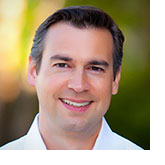 By Lucienne Ide, MD, PhD and Justin Barnes, FHIMSS
By Lucienne Ide, MD, PhD and Justin Barnes, FHIMSS
Twitter: @HITAdvisor
There is talk in the medical industry of helping providers practice at the maximum of their licensure. One reason for this is that we don’t have enough primary care physicians, and, in part, can address this gap with physician assistants, nurse practitioners, registered nurses, and a myriad of non-traditional team members like pharmacists and health coaches. It so happens that all of these individuals can be more cost-effective than physicians.
Medical assistants can do more than escort patients to an exam room and take vital signs. Nurse practitioners have the training and ability to move beyond acute illness diagnosis & treatment to engage in chronic disease management. Collaborative practice agreements allow pharmacists to manage complex patients on complicated medication regimens, assisting the healthcare team with their unique expertise in drug effects and interactions. As for doctors, the highest paid part of that pyramid, how do we make sure they are doing the things that only doctors can do while engaging their team to help with the rest?
Elevating the Patient Role
There’s one team member who is often left out of this conversation — the patient. How do we engage patients at the maximum of their ability? Patients are capable of doing a lot of more to manage their health if we would just give them the proper training and tools. By the way, patients are free. We don’t have to pay them to take care of themselves.
mHealth is the platform on which healthcare will move forward. What role can and should the users of mHealth technologies play? How do we maximize the impact that each user group can have on the health outcomes we are all working towards? How does everyone practice at the maximum of his or her licensure in a mhealth world?
It’s important to remember the simple goal we are all working towards. We are trying to help people live healthier lives and trying to do it cost effectively. Patients are indispensable in working towards this goal. Patients have access to themselves all day, every day. They are on the front lines of healthcare, and they don’t cost anything.
Merging Patients and mHealth
In fact, according to an ONC-funded pilot project at Geisinger Health System, patients help to spot errors such as outdated information and omissions such as medications prescribed by another provider. Personal health records can drive these efforts.
- Patients are eager to provide feedback on their medication list – 30 percent of patient feedback forms were completed and in 89 percent of cases, patients requested changes to their medication record.
- Patient feedback is accurate and useful – on average, patients had 10.7 medications listed, with 2.4 requested changes. In 68 percent of cases, the pharmacist made changes to the medication list in the electronic health record based on the patient’s feedback.
ONC officials also write that the Open Notes Project, launched in 2010 by Geisinger, the University of Washington’s Harborview Medical Center, Beth Israel Deaconess Medical Center and the Robert Wood Johnson Foundation, “found that patients who were given access to their doctors’ notes reported they do better in taking their meds.”
If patients are going to become effective team members, we need to maximize their potential. mHealth solutions can help remove barriers by providing effective education, the necessary tools for tracking health and the right connectivity with other members of their healthcare team. This would allow the rest of the team to focus on the aspects of care they are uniquely qualified to address.
Lucienne Ide is CEO of Rimidi.com and Justin Barnes is a Managing Director at Justin Barnes Advisors. This article was originally published on JustinBarnes.com and is republished here with permission.
